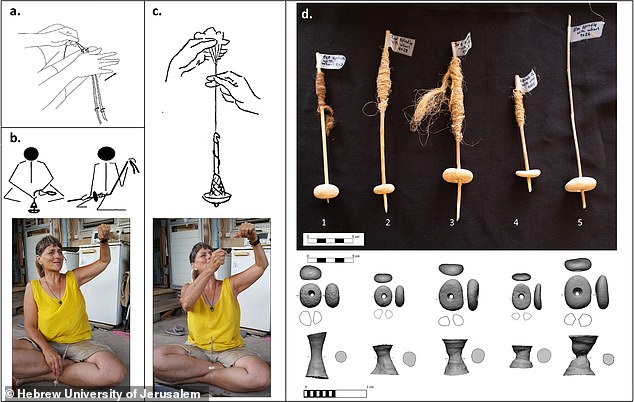Who invented the wheel? Scientists think they have finally answered the age-old question
The invention of the wheel has long been considered a major breakthrough in human history.
But now the records may need to be rewritten, as the earliest evidence of wheel use goes back 6,000 years.
The first examples of wheels currently date from around 4000 BC in Mesopotamia – modern-day Iraq – when the wheel shape was used for pottery.
About 500 years later, during the Bronze Age, the first evidence of the use of wheeled vehicles was documented.
However, a collection of perforated pebbles from an archaeological site in Israel could mark another major milestone in the development of rotating tools – including wheels – experts say.
More than a hundred of the mainly limestone pebbles were excavated at the Nahal-Ein Gev II excavation site, with a round shape perforated by a central hole.
They date from about 12,000 years ago.
Researchers believe these stones were likely used as spindle whorls: round, weighted objects attached to a spindle stick, allowing it to efficiently collect fibers such as wool and spin them into yarn.
A collection of perforated pebbles from an archaeological site in Israel could mark another major milestone in the development of rotary tools – including wheels – experts say

Researchers believe these stones were likely used as spindle whorls: round, weighted objects attached to a spindle stick, allowing it to efficiently collect fibers such as wool and spin them into yarn.
The experts from the Hebrew University of Jerusalem confirmed their theory by building replicas of the stones and successfully spinning flax with them.
This collection of spindle whorls represents a very early example of humans using rotation with a wheel-shaped tool, the team said.
Professor Leore Grosman, one of the authors of the study, said: ‘These perforated bricks are actually the first wheels in form and function – a round object with a hole in the center connected to a rotating axle, long before the appearance of the wheel used for transportation purposes.’
They believe this early use paved the way for future wheel-based rotational inventions such as the potter’s wheel and the cart wheel.
‘The most important aspect of the research is how modern technology allows us to delve deep into the fingerprints of the prehistoric artisan, and then learn something new about them and their innovativeness, and at the same time about our modern technology and how we ‘re are interconnected,” the researchers said.
Their study, published in the journal Plos One, states: ‘The ‘wheel and axle’ revolutionized human technological history by converting linear motion into rotational motion and allowing parts of devices to move.
‘Although its ancient origins are often associated with the appearance of carts during the Bronze Age, we focus on a much earlier wheel-shaped find: an exceptional collection of more than a hundred perforated pebbles from the 12,000-year-old Natufian village.
“We conclude that these objects could have served as spindle whorls to spin fibers.”
